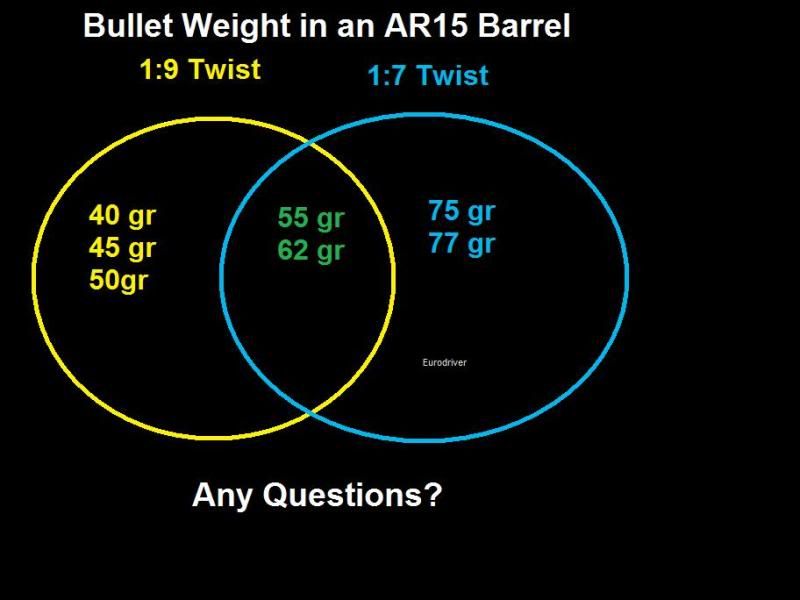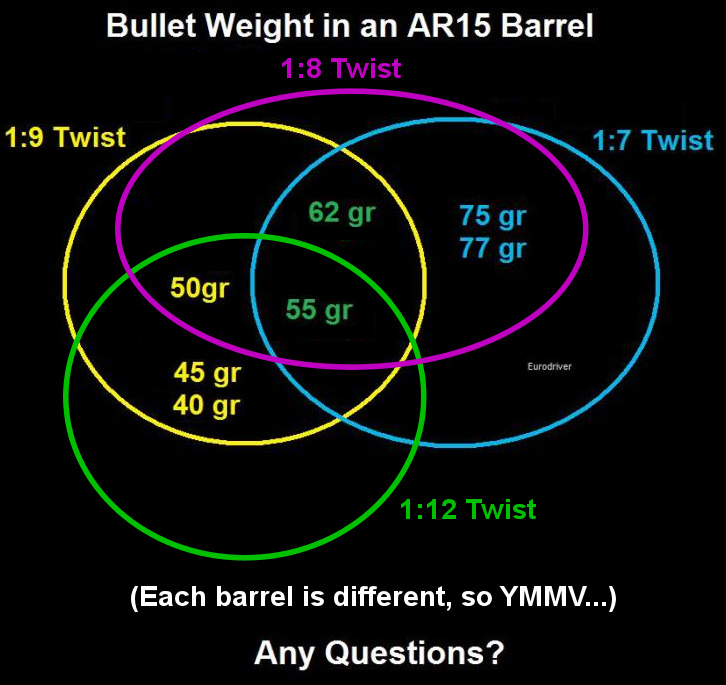Looking around and reading some threads, I just wanted to make sure I got my facts straight.
I am looking into getting an AR15 with a 1:9 twist 20" barrel, so far from what I've read from elsewhere is that this twist rate is ideal for the 55gr to 70gr loads of .223
If I wanted to go for heavier loads I would probably want to look into a 1:8 or even a 1:7 twist barrel. Since I will most likely not being getting into any competition or match shooting anytime soon, I will most likely be shooting the 55gr stuff for practice at the range. However, I do eventually want to get into competitions, should I look into the middle of the road twist rate for my AR, the 1:8?
What should I expect from this, I've read that the faster twists may actually be detrimental to the performance of lighter loads, is this true? In the event I would want to upgrade from a 1:9 twist to a faster twist ratio, how hard would this be to accomplish? I don't think I would have to buy a new upper seeing as how many if not all AR models can be assembled from parts. ranging from assembled to stripped uppers and lowers.
I am looking into getting an AR15 with a 1:9 twist 20" barrel, so far from what I've read from elsewhere is that this twist rate is ideal for the 55gr to 70gr loads of .223
If I wanted to go for heavier loads I would probably want to look into a 1:8 or even a 1:7 twist barrel. Since I will most likely not being getting into any competition or match shooting anytime soon, I will most likely be shooting the 55gr stuff for practice at the range. However, I do eventually want to get into competitions, should I look into the middle of the road twist rate for my AR, the 1:8?
What should I expect from this, I've read that the faster twists may actually be detrimental to the performance of lighter loads, is this true? In the event I would want to upgrade from a 1:9 twist to a faster twist ratio, how hard would this be to accomplish? I don't think I would have to buy a new upper seeing as how many if not all AR models can be assembled from parts. ranging from assembled to stripped uppers and lowers.


